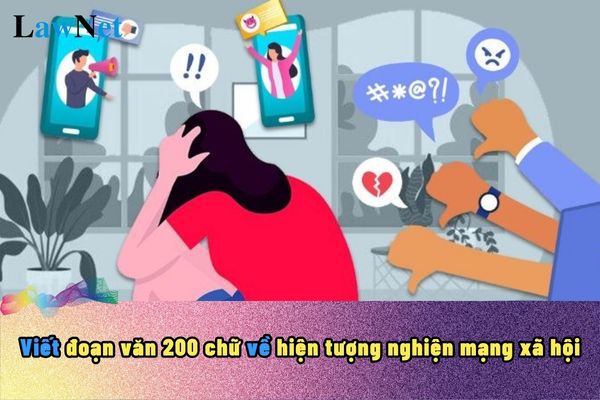Vietnam: What are the sample 200-word paragraphs on social media addiction? Are students at all education levels required to achieve self-control and self-learning abilities?
What are the sample 200-word paragraphs on social media addiction in Vietnam?
Students can refer to the following sample 200-word paragraphs on social media addiction in Vietnam:
|
200-word paragraphs on social media addiction Paragraph 1: The irresistible attraction of social media |
*Note: The information is only for reference./.

What are the sample 200-word paragraphs on social media addiction in Vietnam? Are students at all education levels in Vietnam required to achieve self-control and self-learning abilities? (Image from the Internet)
What is the objective of the general education program?
According to the regulations in Section 2 of the General Education Program issued with Circular 32/2018/TT-BGDDT, the objectives of the general education program are as follows:
The general education program concretizes the objectives of general education, helping students master general knowledge, effectively apply the knowledge and skills learned to life, and self-learn for life, with orientation to choose suitable careers, know how to build and develop harmonious social relationships, possess personality and a rich spiritual life, thereby leading a meaningful life and contributing positively to the development of the country and humanity.
The primary education program helps students form and develop basic elements that lay the foundation for harmonious development in terms of physical and mental quality and capability; mainly focusing on education about personal, family, and community values and the necessary habits and discipline in learning and living.
The lower secondary education program helps students develop the traits and abilities formed and developed in primary education, self-adjust according to common societal standards, know how to apply positive learning methods to complete foundational knowledge and skills, have initial understanding of various careers and have vocational orientation awareness to continue with high school education, vocational training, or participate in the labor force.
The upper secondary education program helps students continue to develop the necessary traits and capacities for workers, citizenship awareness, and character, self-learning ability, and lifelong learning awareness, the ability to choose a career suitable to their ability and preferences, conditions, and circumstances to continue learning, vocational training, or participate in the labor force, with the ability to adapt to changes in the context of globalization and new industrial revolutions.
Are students at all education levels in Vietnam required to achieve self-control and self-learning abilities?
According to the regulations in the General Education Program issued with Circular 32/2018/TT-BGDDT, there are 5 essential traits and 10 core competencies of students as follows:
* The 10 core competencies of students at all education levels include:
- Common competencies of students:
+ Self-control and self-learning ability
+ Communication and cooperation ability
+ Problem-solving and creativity ability
- Specific competencies of students
+ Language proficiency
+ Mathematical proficiency
+ Scientific proficiency
+ Technological proficiency
+ Informatic proficiency
+ Aesthetic proficiency
+ Physical proficiency
* The 5 essential traits of students at all education levels include:
- Patriotism
- Compassion
- Diligence
- Honesty
- Responsibility
Thus, compared to the 10 core competencies of students at all education levels, students must achieve self-control and self-learning abilities.

